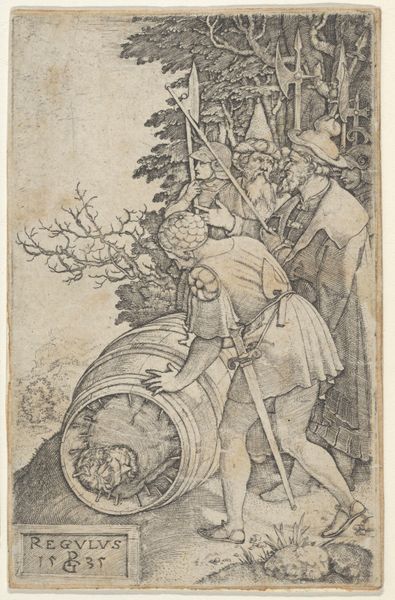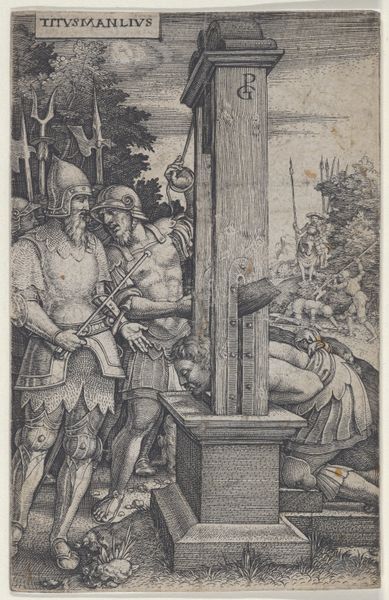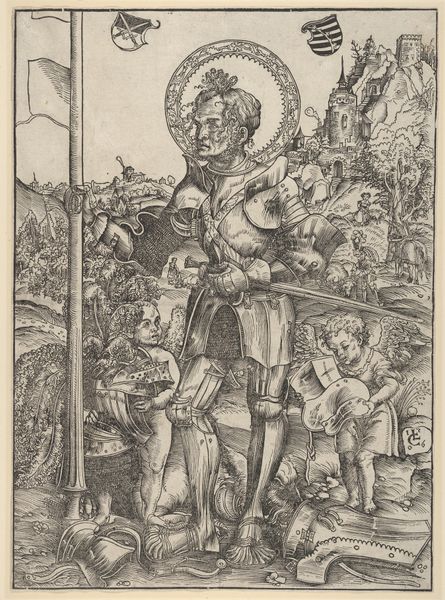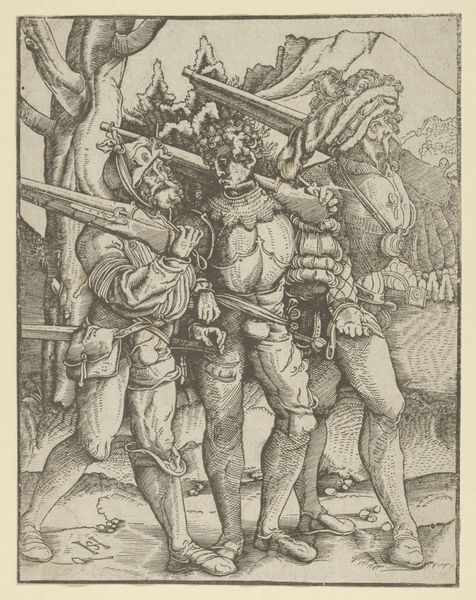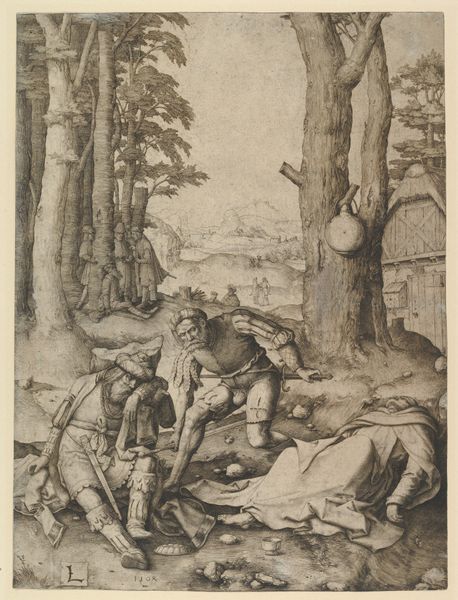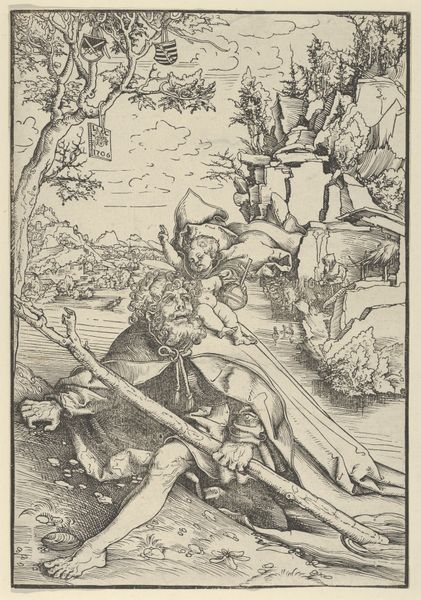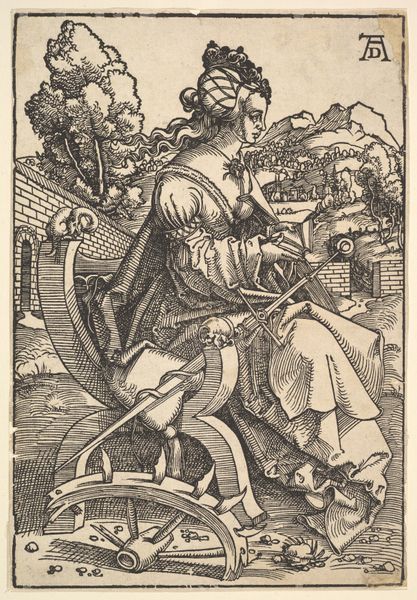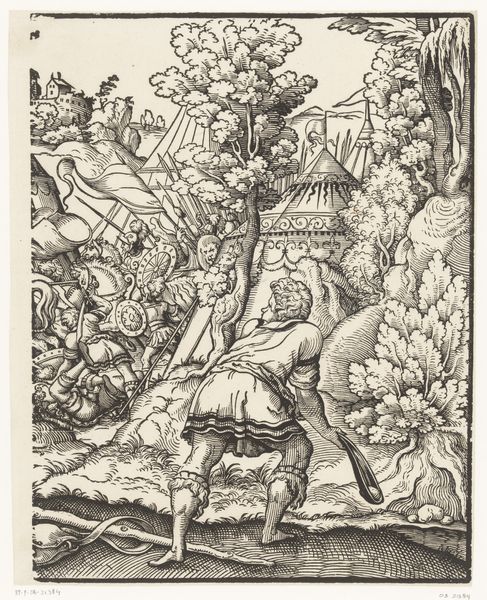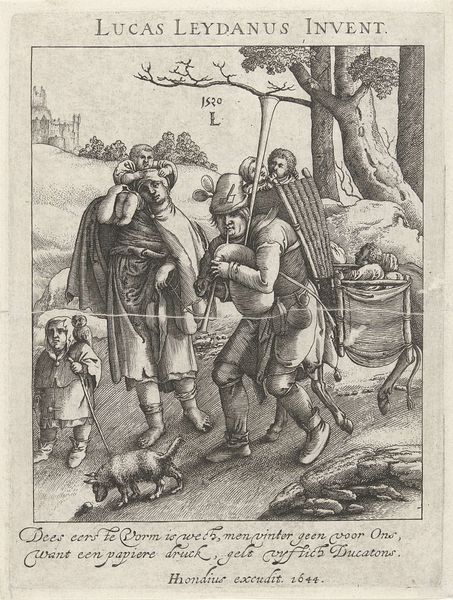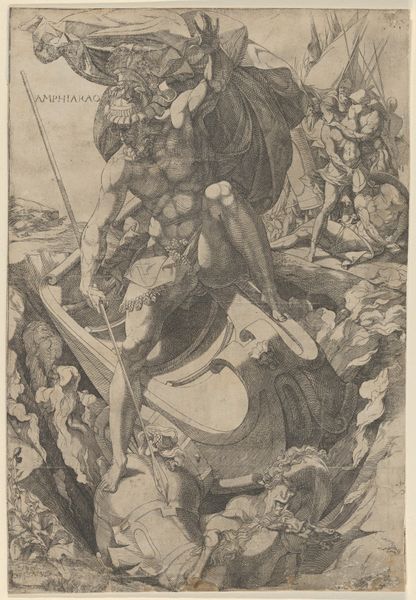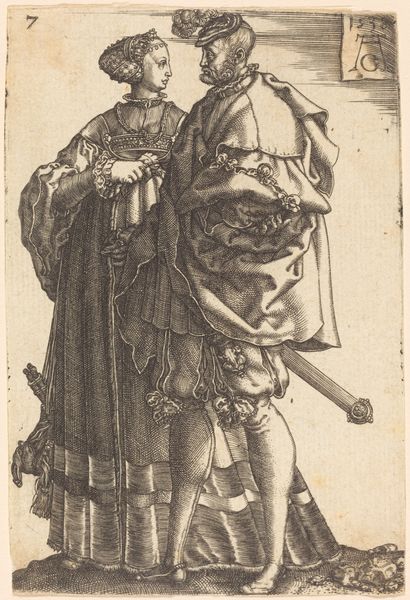
drawing, print, engraving
#
drawing
# print
#
11_renaissance
#
men
#
engraving
Dimensions: Sheet: 4 5/8 × 2 15/16 in. (11.7 × 7.4 cm)
Copyright: Public Domain
Curator: Look at this remarkable print, “Attilius Regulus, from Roman Heroes,” an engraving made in 1535 by Georg Pencz. Editor: My goodness, it’s brutal. That poor soul crammed into what looks like a barrel of spikes... the texture alone sends shivers down my spine. Curator: Indeed. Pencz masterfully employs engraving to create a stark contrast between light and shadow, enhancing the gruesome scene. Note how the lines are not merely descriptive but also delineate form and depth, directing our gaze toward Regulus’s suffering. Editor: Absolutely. The materiality here is compelling. I’m drawn to the crafting process of the engraving; imagining the pressure of the burin carving into the copperplate. Consider, too, how Pencz would have needed exceptional control to depict flesh alongside these implements of torture, and his understanding of the social ramifications inherent in illustrating the fate of Regulus, particularly during the Reformation era when challenging authority carried risks. Curator: A salient point. The artist emphasizes Regulus’s defiance by using the converging orthogonals in the linear perspective drawing our attention to the barrel, positioning him as a visual, but not ideological, focal point. Pencz, deeply influenced by Durer, creates a sense of horror while underscoring the unwavering virtue of its subject. Editor: Pencz had such sharp awareness of materials and class—he wasn't just showing brutality; the artist was illustrating the labor required for torture and execution and exploring this act’s role within systems of control and obedience in society. This wasn’t detached allegory; Pencz’s rendering makes this violent act unsettlingly present. Curator: The print compels the viewer to contemplate questions of morality and resistance. The clarity of line forces a certain… recognition within us, so that its structure makes our engagement unavoidable. Editor: By foregrounding labor, we come face to face with how societies create not just heroes but also monstrous tools for domination, an effect Georg Pencz certainly achieves. Curator: Pencz's understanding of form and symbolic organization yields something that allows for enduring moral reflections even now, so long after its creation. Editor: And looking closely at how that enduring horror gets constructed through those specific material processes makes the experience intensely evocative, almost painfully so.
Comments
No comments
Be the first to comment and join the conversation on the ultimate creative platform.
